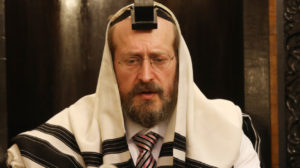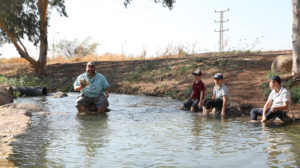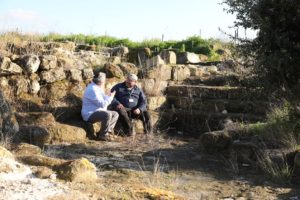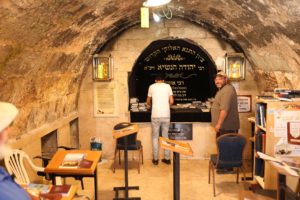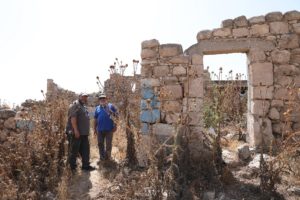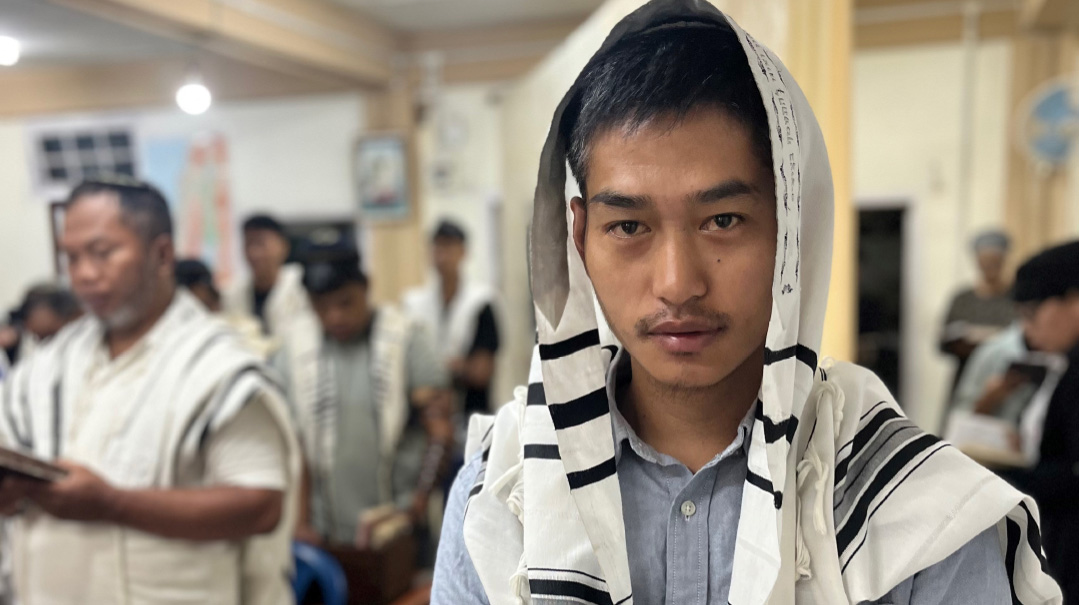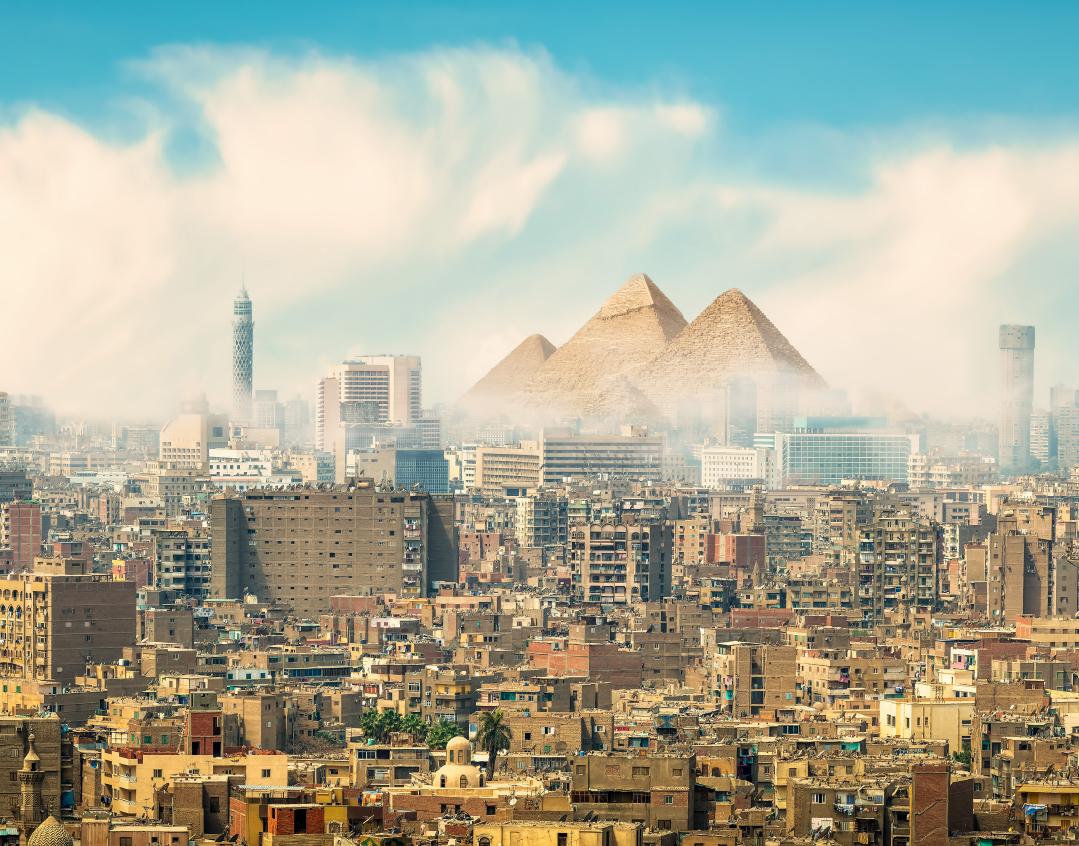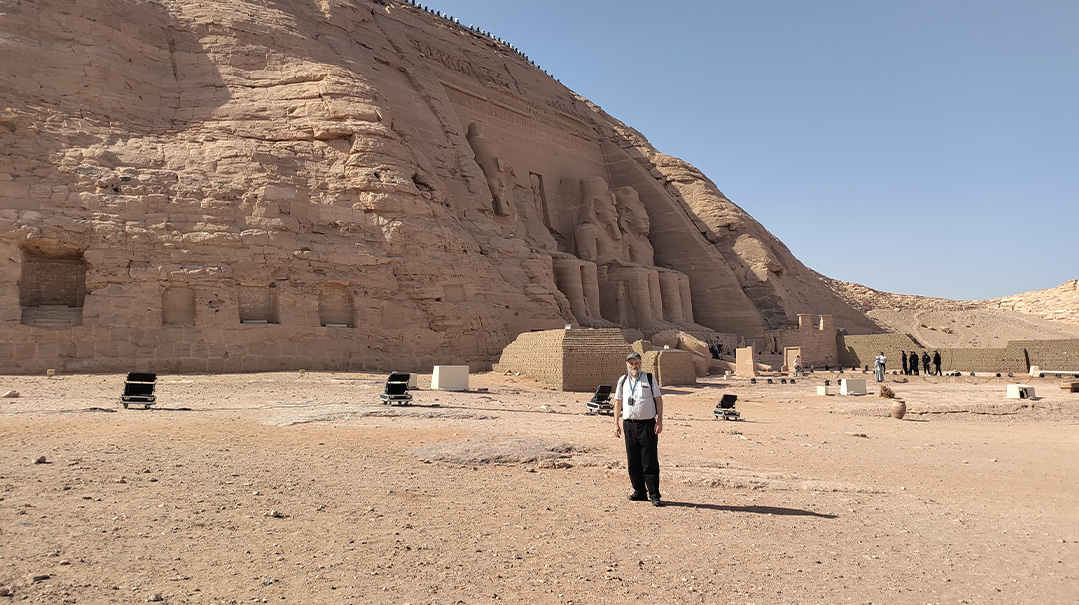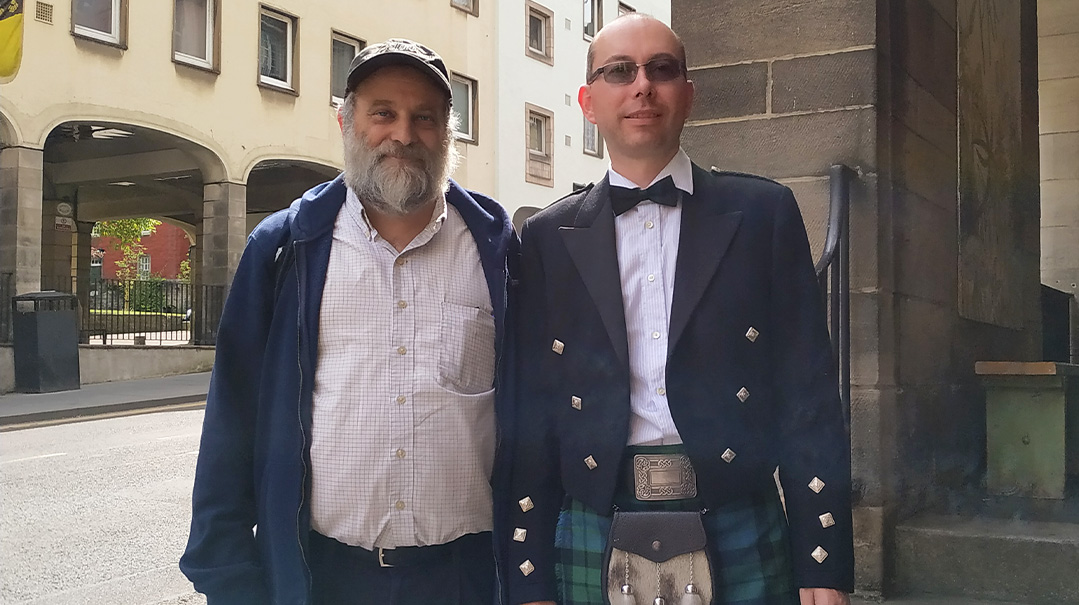Preserved in the Land of the Dodo
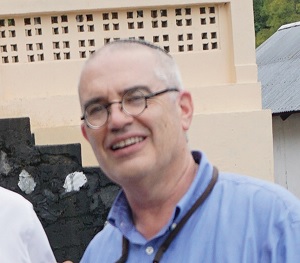
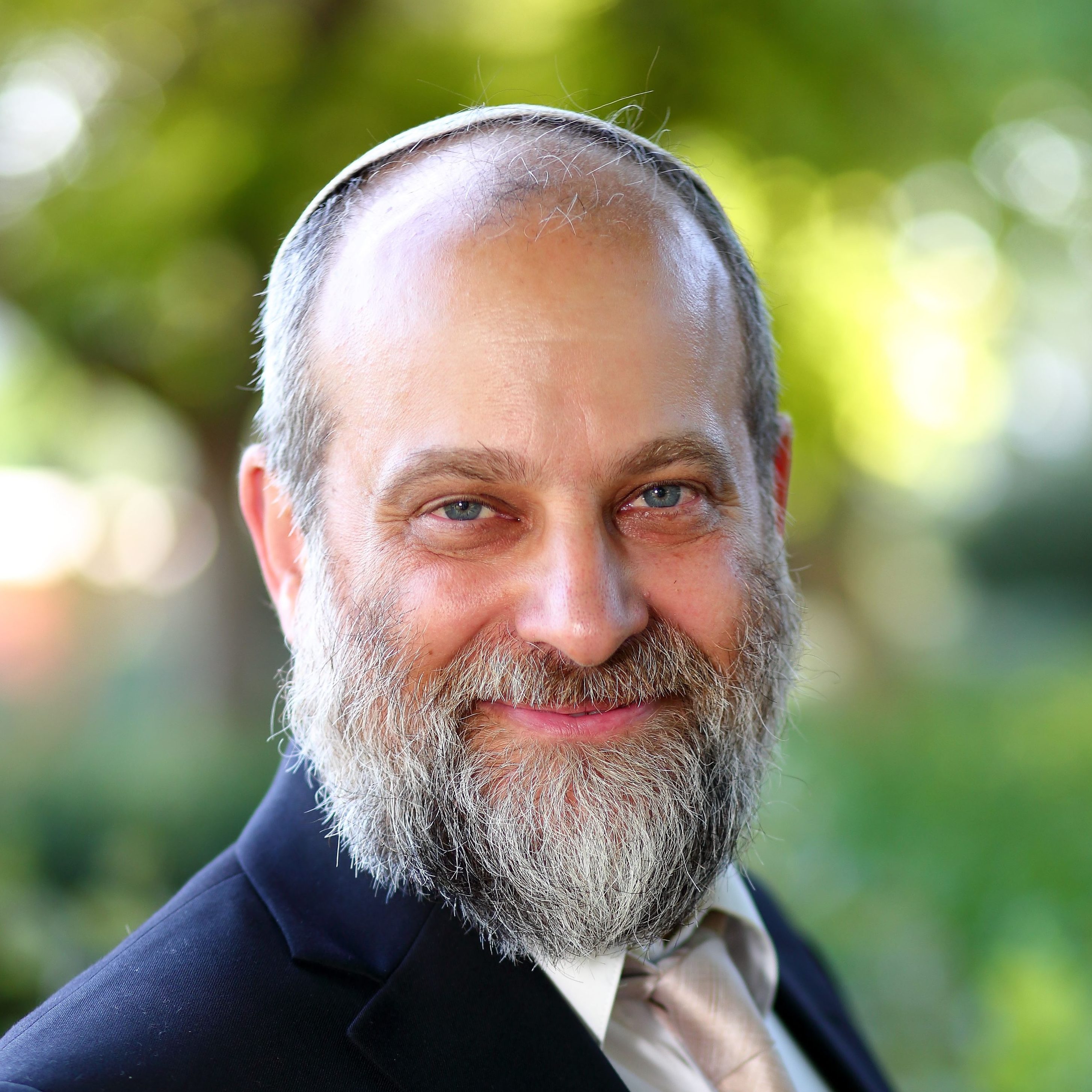
Mauritius doesn’t have a long Jewish history, but it turned into an unplanned prison refuge for a shipload of Jews outrunning the Nazis.
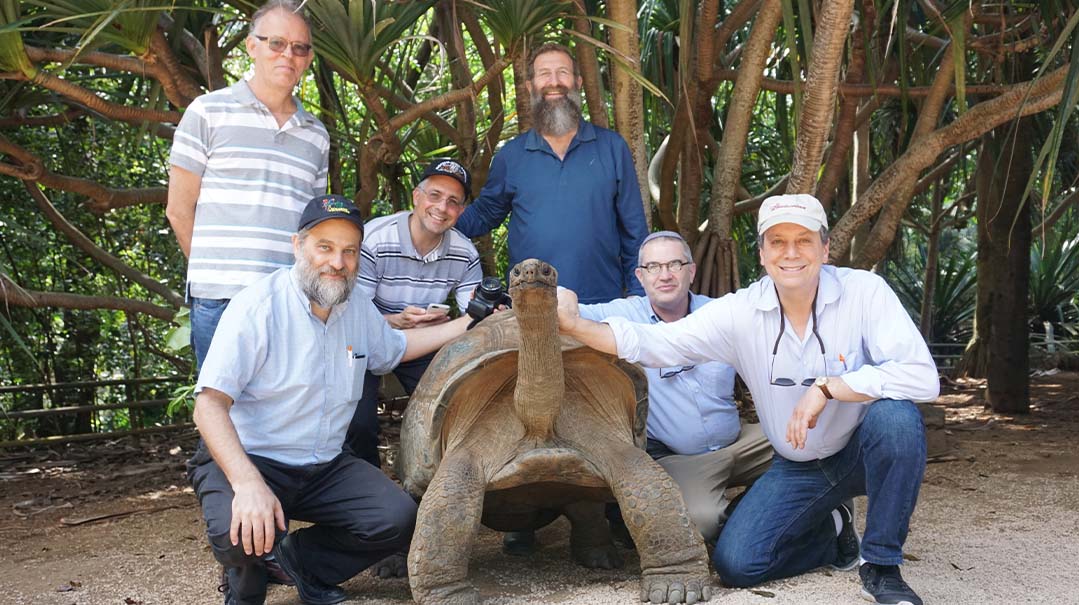
Photos: Ari Z. Zivotofsky and Ari Greenspan
B
y now we’re never surprised when we discover Jews, Jewish history, and Jewish heroes in even the most far-flung places. So when we decided to add a stopover on the remote resort island of Mauritius when we were planning our trip to the emerging Jewish community of Madagascar, we knew we wouldn’t be disappointed. Plunk in the middle of the Indian Ocean, 705 miles from Madagascar and over 2,200 miles from South Africa, Mauritius — with its 1.4 million people — is indeed what you’d call out of the way.
Centuries before Jews came to the island, though, it was home to the legendary extinct dodo bird — a large, passive bird with short wings and a bulky body that prevented it from flying or fleeing in the face of danger. Before Mauritius was inhabited by island settlers, these birds had no experience with human predators, but once discovered by Dutch sailors in 1598, the dodo’s end was quick in coming. Dodo meat was considered a delicacy, rats and monkeys that escaped from the ships posed a threat to dodo eggs and chicks, while the pigs, goats, chickens, cats, and dogs that were introduced to the island made the dodo’s once peaceful life a daily struggle for survival. The last claimed sighting of the big bird was in 1662.
The legendary bird was not the only one facing the process of extinction, as the island at one time was replete with unique flora and fauna, many of which today have gone the way of the dodo. But there is still much to preserve on this magnificent hub of nature, and one of the leaders in that effort is a man named Owen Griffiths — who also happens to be president of the island’s 100-plus member Jewish community.
We found out about Owen before heading out to the African coast, and he exemplified the Jewish trait of hospitality. From the moment we landed he took us around, showing us the historic Jewish sites and some of the island’s natural treasures. But the most interesting Jewish “site” on the island is clearly Owen Griffiths himself.
Tortoise Pace
Griffiths is a fascinating individual who’s willing to go to great lengths to help the Jewish community. His personal history starts with the early days of the Jewish settlement in Australia, where his great-great-grandfather was shipped as a petty thief at the time the British were using that distant continent as a massive prison colony.
In fact, all four of Owen’s grandparents were born in Australia. His great-grandfather, Abraham Reuben, was among the founders of the Hobart Synagogue, Australia’s first synagogue building. His maternal grandfather, Lieutenant Leo Rosengarten, was an officer in the Australian military, and Owen recently discovered an item about him from the Sydney Morning Herald in 1919. It seems that he’d gotten into a fracas with another officer over some lamb chops. They were hauled in front of Captain Cohen, a superior officer, for a quick trial. Captain Cohen is reported to have scolded Lieutenant Rosengarten by saying something to the effect of “if this had been over a piece of pork chop, I would have thrown the book at you, but seeing that it relates to lamb, I will let you off with a scolding.”
Owen was trained as a biologist in Australia and today, among his many other communal activities, owns and runs the La Vanille Nature Reserve, an amazing nature park where one can stroll through vegetation in a natural environment while seeing and interacting with giant tortoises, known as “Darwin Tortoises.” They are a true natural wonder. Standing about three feet tall and weighing up to 400 pounds, these amazing creatures can live to 100 years or more — it’s said that some are closer to 200.
Owen led us through the park as we fed and stroked the tortoises, a species he reintroduced to neighboring Rodrigues Island, where giant tortoises once existed and are now extinct.
“These tortoises were once so numerous that an earlier explorer describes getting off a boat, stepping on the back of one and walking only on tortoises for 100 yards before having to touch the ground,” Owen told us. But the tortoises were wiped out from the island when traders shipped them to Europe for their meat and their shells.
Today, Owen is responsible for over 1,000 tortoises and 2,000 crocodiles, as well as monkeys, iguanas, and deer that reside in the nature park. Always looking to educate others, he has a great little museum within the park devoted to the native flora and fauna, extant and extinct. And always looking to include a Jewish twist, he employed two Israeli artists — Maiyan and Tovi Karidi — to design a mosaic for the museum using the native Mauritian fly-catcher bird as a theme, and then to embed something in Hebrew that only the initiated would notice. They did, and we indeed immediately spotted the Hebrew word “tzipor.”
Owen, passionate about conservation, has initiated conservation projects in Mauritius, Rodrigues, and Madagascar. In Mauritius and Rodrigues this involves restoring degraded native forests by weeding out nonnative invasive plants and replacing them with Mauritian and Rodriguan plants. In Madagascar he has secured conservation leases on two large areas of native forest full of wildlife such as lemurs, and has in his collection hundreds of extinct mollusk fossils from that country that he’s been collecting for years. In Madagascar, his goal is to protect the forests from threats such as fire and illegal hunting and logging.
Locked Up Again
When Mark Twain arrived on Mauritius during his around-the-world tour in 1896, he wrote how “from one citizen you gather the idea that Mauritius was made first, and then heaven; and that heaven was copied after Mauritius.” But although it’s considered an island paradise, the most important of Mauritius’s Jewish sites relates to a little-known Holocaust-era episode.
It started with a clause in the German-Soviet Nonaggression Pact of 1939, which called for the repatriation of German citizens living in Bessarabia. The boats transporting these Germans up the Danube River would be empty on the return voyage, so the Nazis agreed to use them to take high-paying Jews in the other direction. This movement of the Jews was facilitated by a now little-known Nazi Central Office for Jewish Emigration. Approximately 3,500 Jews from Central European cities such as Vienna, Prague, Brno, Berlin, and Danzig viewed as miraculous this opportunity to escape.
After being herded into subhuman conditions and waiting months, in early September 1940 several overcrowded ships began a journey that the passengers hoped would bring them to freedom and safety in the Land of Israel. They traveled 1,200 miles down the Danube to the Black Sea and from there headed to the Mediterranean and toward the Land of Israel.
The first of the packed boats to arrive on Palestinian shores was the Patria, but the British had no intention of letting the travelers enter the Holy Land. Instead, they planned on turning the ship around and sending it off to one of their distant colonies in the Indian Ocean — either Mauritius or Trinidad and Tobago. In an effort to forestall this, the Haganah planned to set off a minor explosion in the engine room to disable the ship. But something went horribly wrong and the explosion was larger than planned, the ship rapidly sank, and 202 refugees drowned.
The survivors of the Patria were brought to the Atlit detention camp, and out of some sense of pity, the British eventually permitted them to remain in Eretz Yisrael. But close to 1,600 passengers from a second ship, the Atlantic, who had also been interned in Atlit, were loaded onto two boats on December 9, 1940, and shipped to Mauritius.
Three weeks later, after burying two of the refugees at sea, the transport carrying 1,581 Jewish refugees landed on the lush, picturesque island that at the time had only 400,000 inhabitants. They were herded into the Beau Bassin Prison where they were held for almost five years.
In the first two months, over 40 of the detainees died. In the camp, men were segregated from women and husbands separated from their wives — men in former prison quarters and women in iron huts — and although they were not beaten, everyone suffered from tropical diseases, shortage of food, and inadequate clothing.
When they arrived, there were only two other Jews on the island. One of them was a man named Isia (Isaac) Birger, who arrived in 1937 from Lithuania. Although he unfortunately married a local Catholic woman, Mr. Birger remained a proud Jew and he interceded in favor of the refugees, acting as the liaison between the Jews in Mauritius and the South African Jewish Board of Deputies. Eventually, various Jewish organizations came to their aid, the segregation between genders was finally lifted, families were reunited, and 60 children were born in the camp.
Impossible Choices
Having learned about this little-known piece of history, we wanted to see where these events transpired, and Owen was again our faithful escort. The first stop was the prison — which is still an active jail, the main one on the island. We heeded his warning against taking pictures and just looked over the fence, where we were able to see the building where the Jewish men were held; the women’s compound was demolished after the war.
As a concerned Jew and president of the local community, and also as a well-connected Mauritian, Owen has been involved with the few modern-day Jewish prisoners who have ended up on the wrong side of that fence, and he shared with us some of those stories too. In general, the offenses were drug related and the imposed sentences were stiff.
We next headed down the road to the largest cemetery on the island, in which a Jewish section was inaugurated when refugee prisoners began to die. St. Martin’s Jewish cemetery today contains the 127 graves of those who perished during those five difficult years of interment, as well as two more recent graves. (Because most of the Jews who have at some point called Mauritius home are transients, Jews who have passed away on the island are repatriated to their country of origin.)
As we stood by the grave of a man named Karl Lenk, who passed away alone on the island, far from his family, Owen related the tragic story. Back in Vienna, he was faced with a life-and-death dilemma. He had the ability to obtain fake baptismal papers for his family that could then be used to save their lives.
This wrenching question is anything but simple, though. The famed Rabbi Ephraim Oshry (1914–2003), rabbi in the Kovno Ghetto during World War II who later published his Holocaust-era responses in five volumes of She’eilos U’Teshuvos Mima’amakim, was asked a similar question in 1942 (1:15). He responded that “a baptismal certi?cate has only one connotation: that the owner of this certi?cate has, G-d forbid, forsaken his Creator and denied his people, the people G-d chose as His treasure. It is absolutely forbidden for a Jew to use one even though he believes wholeheartedly in the Rock of Israel and its Redeemer. He is commanded to sanctify G-d. I concluded that there was absolutely no way to allow using a baptismal certi?cate, even if one expected to save his life with it.”
It is possible, however, that with 40 years of hindsight he changed his position, as evidenced in a lengthy response penned four decades later to a similar question (5:3).
We do not know if Mr. Lenk ever asked for a psak, but the issue divided his family. His wife and children accepted the papers, found asylum in England, and survived the war. In his diary he wrote that he did not accept the certificate — and thus he ended up on one of those ships and was imprisoned in Mauritius, where he died on the 15th of Iyar, 1943.
Walking to the back of the cemetery, we approached the graves of the first two Jews to die on the island. One was Anita Hirschmann, a 35-year-old woman whose husband and father were living in Jerusalem, and who left orphaned an 11-year-old son in the camp when she died; the other was Emila Becker-Shapira. We were surprised to see that the graves were perpendicular to all of the others in the Jewish cemetery. One theory explaining this is that when these two women died mere days after arriving (January 5 and 7, 1941) the Jewish prisoner community did not yet have a chevra kaddisha in place and the British did not permit any Jews to accompany the bodies, so a few locals buried them in a new section of the existing cemetery, in the same direction as the non-Jewish graves.
When the Jews finally began burying their own dead, cordoning off that section of the cemetery, they buried them directionally so that their feet faced the entrance of the cemetery, as per some Jewish burial customs. (The Chasam Sofer, in Shu”t Yoreh Deiah 332, explains that there is no halachah regarding direction of burial, but several customs have developed that reflect the anticipation of techiyas hameisim.) In the Jewish section of the Mauritius cemetery, all but those first two graves are facing the entrance, which is in a northerly direction pointing toward Jerusalem.
We next visited one of the most tragic graves in the cemetery. During the long internment, even when couples were officially separated, there were times when the conditions were relaxed and couples were able to meet. One of these couples was Fritz and Hannah Haendel. Fritz had originally been the passenger representative on the Atlantic, and during the second year of internment, he was one of three prisoner painters whose works were exhibited at a hotel in Curepipe. But by the last year, 34-year-old Fritz began losing hope and sank into a deep depression. Then Hannah found out she was expecting, but she asked the doctor not to tell her husband — she wanted to tell him personally when they again saw each other on the next Friday. In the meantime, he met the doctor, who said nothing. The despairing man, not knowing his wife was expecting and seeing no future, took his own life on Thursday, 19 Teves 1945, and was buried the following Sunday. Hannah gave birth and never remarried, always wondering what might have been had she let the doctor break the good news.
One of the children born on the island was Naphtali Regev, who came into the world in the Beau Bassin prison in 1944. His parents, Regina and Dr. Aaron Zwergbaum, met on the ship Helios on the way to Bratislava and they were married in prison in 1942. Dr. Zwergbaum wrote an important history of that period for Yad Vashem, and since 1996 Naphtali has served as the honorary consul of Mauritius in Israel.
Shared History
Adjacent to the cemetery is a new project that Owen is proud to be involved with — it’s an old chapel that has been converted into a small but impressive museum about this historical period. The project is a joint venture between the small Mauritius Jewish community and the African Jewish Congress (AJC), an organization run by Rabbi Moshe Silberhaft of South Africa that supplies Jewish support for small, Sub-Saharan Jewish communities in 13 countries. Rabbi Silberhaft — who was born in Jerusalem, moved to South Africa as a child, and then came back to study in yeshivos in Eretz Yisrael where he earned semichah from the Rabbanut, and is known as “the Traveling Rabbi” — occasionally visits the island, and in recent years a Chabad rabbi has moved in. (Because of limitations on foreign religious clergy, he is officially there as a kosher caterer.)
A lot of information about Jewish Mauritius can be found in the book The Mauritian Shekel by Genevieve Pilot, released in English in 1998 and in French in 2014. The author, a non-Jewish native of Mauritius, was 11 years old during World War II, and during a period in which the strict detention conditions were relaxed, she had a beloved art teacher from among the detainees.
In the museum there are assorted pictures, including some related to the religious life of the detained illegal immigrants. There were two shuls — one for the Orthodox and one for the Reform. There were even a few chassidim in the camp, but it’s clear that the minority of the prisoners were religious, as the kosher kitchen only served about 15 percent of the group.
While this museum will certainly be of great interest to any Jew visiting the island, its prime importance probably lies in its educational value for the locals. While intentionally not a Holocaust museum, it does introduce the residents of this Indian Ocean island to that dark chapter while also depicting their shared history with the Jews. We hope that many of the island’s schools (and adults) as well as all visitors to this island paradise will avail themselves of this small treasure.
Not far from the town of Curepipe (also known as La Ville-Lumi?re, the City of Light), there is another site of Jewish interest. There exists on the island a group of people who love the State of Israel, and back in 1966 they founded the Mauritius-Israel Friendship Society. For many years they were instrumental in maintaining the Jewish cemetery and served as the de-facto Israeli consulate.
In 2005, upon a request from this group, the local government gave them some land upon which they built the Amicale Maurice Israel Center (also known as Baby Curpen Center, named after the first honorary consul of Israel in Mauritius), where they hold meetings and events. In the back of the center they even built a small synagogue, the first on Mauritius, which is used by the island’s Jews for services and for religious events.
In 2007 the Island Hebrew Congregation was officially launched, and that year they met for Yom Kippur services — the first time Jewish prayer services were held on the island since the detainees left more than 60 years earlier. In the last ten years services have been organized on a more regular basis, but because very few of the Jews live near this center, davening is usually held in a rented room on the north end of the island.
The Sweetest Dilemma
Today, Mauritius is a magnet for tourists looking for a resort with sunny beaches, but the island’s economy had other legs upon which it once stood. One of those was the sugar industry. With so much fascinating halachic history surrounding sugar, we headed off for a sweet experience at an old sugar mill that has been transformed into a sugar museum. Sugar as we know it came to the Western world in the 1500s, even though it’s hard for us to imagine a world without it.
Sugar factories in Mauritius produce about 600,000 tons of sugar annually from around 5.8 million tons of sugarcane. Of the total sugarcane production, around 35 percent is contributed by nearly 30,000 small growers — we spotted some of their trucks delivering the cane.
The sugar industry as a whole over the past 300 years was built on the pain and suffering of 13 million African slaves. It is an extremely labor-intensive product to grow and process. Slaves were huge business and there were Jewish slave owners as well, generating halachic questions about how to treat slaves and whether they must be converted — as per the instructions regarding an eved Canaani — upon release.
Another major halachic controversy regarding sugar swirled around using it to sweeten coffee or tea and to drink that before davening. (The stringent halachah is that one is not supposed to eat or drink anything other than water before davening.) As tea and coffee became widespread, people slowly became addicted and “needed” their coffee before davening. The Mishnah Berurah (89:22), while hesitating about tea and coffee with sugar, does permit its consumption before davening for those who feel excessively weak without it.
For many, the bitterness of coffee is too hard to swallow without sugar. The topic is analyzed in Nahar Mitzrayim by Rav Refael ben Shimon, the chief rabbi of Cairo, at the turn of the 20th century, who permits it, writing that “many great rabbis drank it with sugar… and observation and experience shows that whoever usually drinks it cannot open his eyes and get rid of his sleepiness and concentrate without it.”
Munching on sugar cane, we came to the sweet realization that no matter where you go, even to the ends of the earth, Jews have been there or are there. The fact that in this sunny island of sugar growers, in the middle of the Indian Ocean, Jews were imprisoned for attempting to enter the Land of Israel but thereby saved from the Nazis, is just one more example of G-d’s Providence even in the far corners of the world.
The Missing Tombstone
You can learn a lot about people by reading their epitaphs, but one such tombstone didn’t match any of the names of the deceased known to have been buried in Mauritius’s Jewish cemetery. The name Ruth Mein Liebermann was engraved on a headstone, but was not listed in the official register. The mystery was compounded because for years, those involved in preserving the cemetery believed that in the register there was a Polish Jew named Szaja Junker — for whom no grave was found. Our traveling companion Chaim Guggenheim, who is fluent in German, was immediately able to explain to us what had taken the locals quite some time to resolve.
The inscription on the tombstone was in German, albeit with a few errors. It reads: “Hier Ruth Mein Liebermann Unser Guter Vater aus Warschau,” which means “Here rests my dear husband (lieber Mann), our good father from Warsaw.” Part of the confusion arose from the fact that the word “rests” should be “Ruht” but was written as “Ruth,” which looks like the name of a woman. Furthermore, the word “Liebermann” is written without a space, which again makes it look like a name. And regarding the missing tombstone for Szaja Junker? That was the real name of the deceased — written in garbled Hebrew on the original headstone.
(Originally featured in Mishpacha, Issue 658)
Oops! We could not locate your form.
